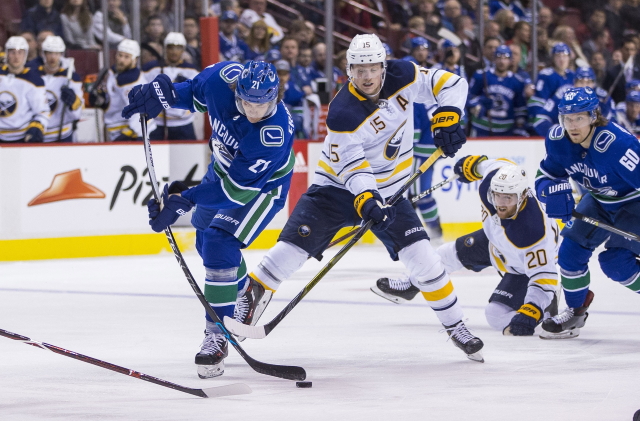NHL deputy commissioner Bill Daly’s recent projection of a salary cap between $84 million and $88 million for 2020-21 was good news for several cap-strapped clubs like the Arizona Coyotes, Chicago Blackhawks, and Toronto Maple Leafs. The higher the cap, the more room to re-sign key players and bolster their lineups for next season.
For budget-conscious clubs, however, a significant cap increase presents a different challenge. They must spend to reach the cap minimum, usually set between $16 million and $18 million below the upper limit. In other words, if the cap reaches $88 million, a team could find themselves spending as much as $70 million to become cap compliant.
The rebuilding Ottawa Senators could find it challenging to reach that lower limit. They have over $42 million invested in 10 players for next season, meaning they could end up spending over $28 million to reach the cap minimum.
Restricted free agents Anthony Duclair, Connor Brown and Chris Tierney will take up part of that cap room. There’s also speculation they’ll bring back unrestricted free-agent defensemen Mark Borowiecki and Ron Hainsey. Re-signing those players will get the Senators closer to the lower limit, but won’t be enough to push them over it.
The Detroit Red Wings are also in the midst of a rebuild. They have over $45 million tied up in 10 players. Several, such as Anthony Mantha, Tyler Bertuzzi, Adam Erne, and Robby Fabbri, are restricted free agents with arbitration rights this summer.
Re-signing those RFAs and pursuing depth via trades and the free-agent market would push the Wings over the cap minimum. However, that depends upon how much general manager Steve Yzerman will be allowed to spend and how much he’ll invest to accelerate the rebuild.
The Wings were a free-spending club during their championship heyday. Yzerman could opt to stick with affordable young talent for the foreseeable future.
Meanwhile, the Buffalo Sabres remain mired in a seemingly endless rebuild. With over $47 million committed to 10 players, GM Jason Botterill could make a couple of big trades or free-agent signings to bring in some much-needed scoring punch. That depends on whether ownership is willing to spend toward the cap. Otherwise, Botterill could find himself looking for more affordable options.
Having the available cap space is one thing, but attracting free-agent talent to a rebuilding team won’t be easy. Those clubs, however, can find other ways to reach the cap floor.
In recent years, several players on permanent long-term injury reserve were traded by cap-strapped clubs to those with the room to absorb their contracts. The receiving team also usually receives a sweetener, like a draft pick or a prospect, included in the return.
Recent examples include the Blackhawks shipping Marian Hossa to the Coyotes in 2018, and the Senators last summer acquiring Ryan Callahan from the Tampa Bay Lightning.
Teams looking to shed an active player with a troublesome contract could also come calling. The Vancouver Canucks, for example, could attempt to ship out veteran Loui Eriksson and his $6-million AAV through 2021-22. His full no-trade clause reverts to a 15-team modified no-trade on July 1.
With nearly $64 million tied up in 13 players and free agents such as Tyler Toffoli, Jacob Markstrom, Jake Virtanen, Troy Stecher, and Chris Tanev to re-sign or replace, dumping Eriksson’s cap hit would free up room to re-sign their key free agents.
Eriksson gets paid a $3 million signing bonus on July 1, after which his actual salary over the next two years is $5 million. That could make him an attractive option for clubs in need of reaching the cap limit.


